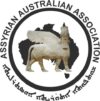Our Assyrian History
Assyrians are a transnational ethnic group indigenous to Assyria, a geo-cultural region spanning contiguous parts of Iraq, Iran, Syria and Turkey.
Assyrians speak Assyrian Aramaic with the two predominant dialects being the Eastern and Western dialects respectively.
Assyrians are predominantly Christians with some identifying as Chaldeans or Syriacs depending on their church denomination. Assyrians historically belong to five churches including the: Ancient Church of the East, Assyrian Church of the East, Chaldean Catholic Church, Syriac Orthodox Church, and the Syriac Catholic Church.
Assyrians controlled large swathes of land during the ancient Assyrian empires, until the Fall of Nineveh circa 612 BC, leading to the demise of the Assyrian Empire. However, Assyrians continued to rule over Assyria under succeeding empires such as the Achaemenid province of Athura, the ancient kingdom of Adiabene, as well as the province of Asoristan under the Sasanian Empire which lasted until 637 AD.
In the late 19th century, Assyrians experienced massacres at the hands of Kurds and Turks, most notably the 1843 and 1846 Massacres of Hakkari, the 1895 Massacre of Diyarbekir and the Hamidian massacres. In 1914, the Ottoman Empire orchestrated genocide against the Assyrian, Armenian and Greek population of Anatolia with the support of Kurdish tribes. This event is known as ‘Seyfo’ or the ‘Assyrian Genocide’ in contemporary sources.
Following the advent of Pan-Arab nationalism in Iraq and Syria, Kemalist policies in Turkey and the 1979 Iranian Revolution, Assyrians have immigrated en masse to the Western world. This has been further accelerated by the conflict between Turkey and Kurdish militants in southeastern Turkey, the 2003 invasion of Iraq and the 2014 invasion of northern Iraq and northwestern Syria (Gozarto) by the so-called Islamic State.


